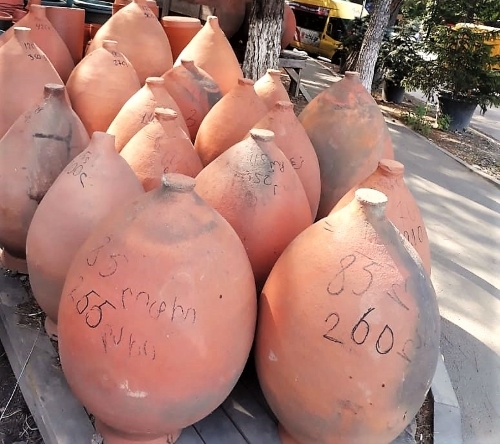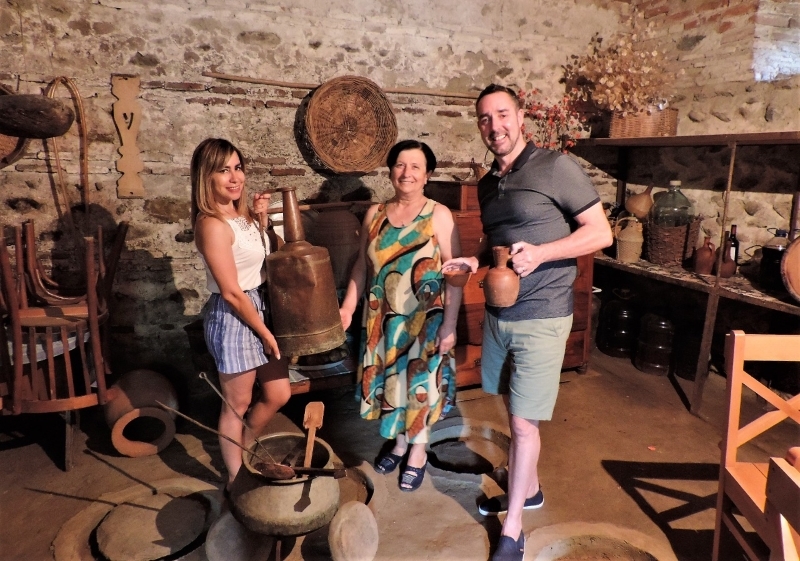Birthplace of Wine and Traditional Qvevri
Georgia is returning to the traditional production of Qvevri wine, making this ancient wine-making country very different from the norm. With over 8000 years of trial and error, and all the modern methods now available, many wineries are still staying true to their ancient roots by using huge terracotta vessels.
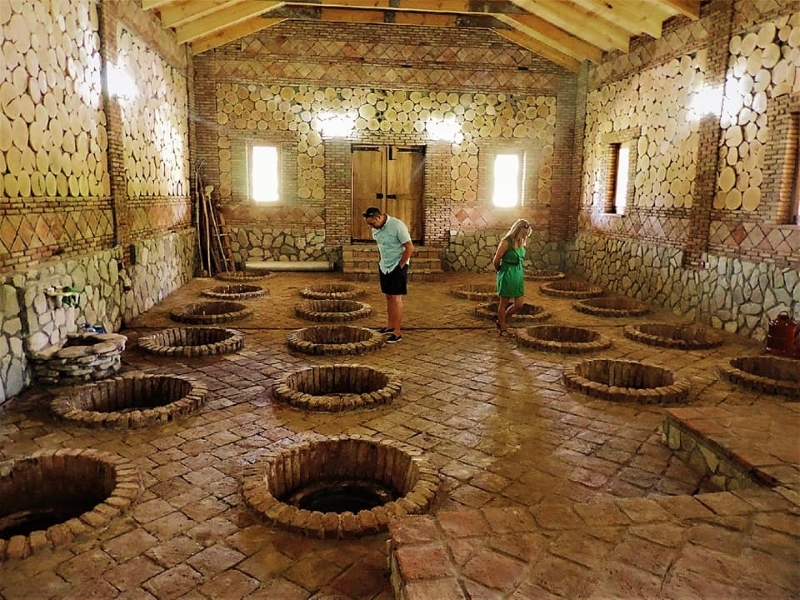
Walking around in old Tbilisi you are struck by the history of the city and the existence of subsequent layers of ancient civilizations, the Soviet era, and recent modern developments, all side-by-side. This is true with the wine industry too.
Our Facebook album with a few of our photos from Georgia
Much of Georgian wine is produced in modern stainless steel of course, with cooling jackets and computer control. But there is a growing market for Qvevri wine. People are prepared to pay more for the effort and use of traditional ways they know go into making this wine. Plus the aromas, flavors, and mouthfeel are different, especially the white Qvevri wine.
One of the fantastic things about Qvevri wine is that, in a world where much of our wine is highly controlled and homogenized, the use of the Qvevri (or Kvevri) leads to a more random process and the results are truly a mystery until the amphora is opened months later.
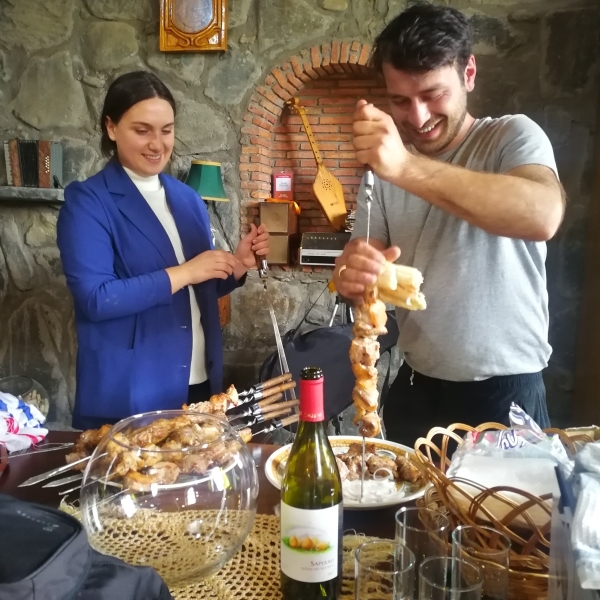
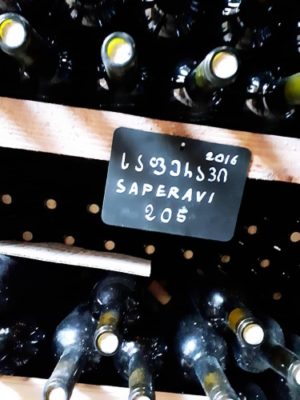
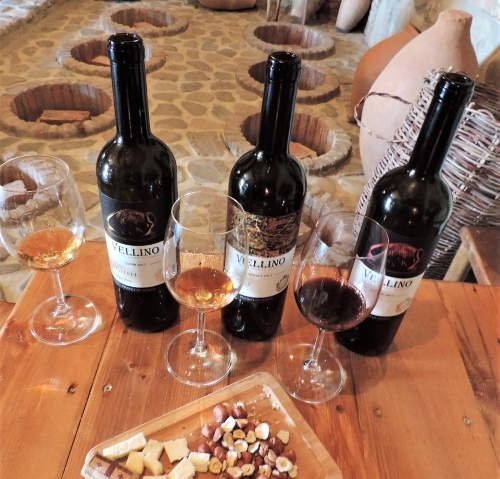
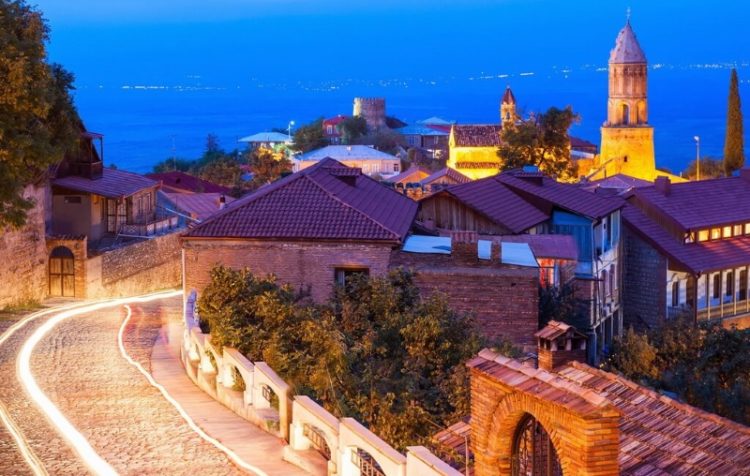
The beautiful hill-top town of Signagi in Georgia, center of wine country
Note: There are not many places where you can see the use of huge amphora such as you find in Georgia. In Armenia, they have “Karas” and in Spain, you have “Tinajas”, both of these are usually above ground (although some Karas are partially buried). In Georgia, the clay vessels are generally fully buried.
The three wine regions of Kakheti, Kartli, and Imereti have their own Qvevri practices. In Imereti for example, about 10 % of the skins, seeds, and stems go with the pressed juice into the Qvevri to be fermented together. This is considered the conservative end of the Qvevri process scale.
In Kartli about a third of the solid matter gets thrown into the pot hence a mid-point of “amberness” production, whereas in Kakheti it all gets thrown in to be fermented (no leaves of course). Kakheti is therefore known as the extreme end of the Qvevri winemaking scale.
The five or six months that the white grape juice is bubbling away, buried underground to keep the vessel cool in the amphora, produces the famous “amber” or “orange” wine. It spends such a long time macerating and fermenting that the wine becomes balanced and very stable.
You can see the color above in a 2013 vintage from Shalauri (drunk in May 2018). It has quite a deep amber color indicative of the more aggressive skin contact process. You can read that it is unfiltered also, hence has very full body. We spent a very informative and alcoholic couple of hours at the winery drinking a little with the winemakers who just rocked up from the vines to say hello.
Our visit to several other wineries gave us some other great experiences, Pheasants Tears winery, for example, is a great place to taste. Plus its location in the lovely hill-top town of Signagi is a bonus.
Georgia feels very authentic still, especially at some of the wineries that are well off the beaten track. You will not be greeted by plush reception areas and smartly dressed, multi-lingual staff. The guys you see above could only speak to us through our guide and even so they were very entertaining. The wine and its people cling to old Georgian traditions, are very friendly, and proud to show you the wine they produce.
Our Birthplace of Wine triangle is perfect for anyone who wants to explore this ancient wine world in detail.
